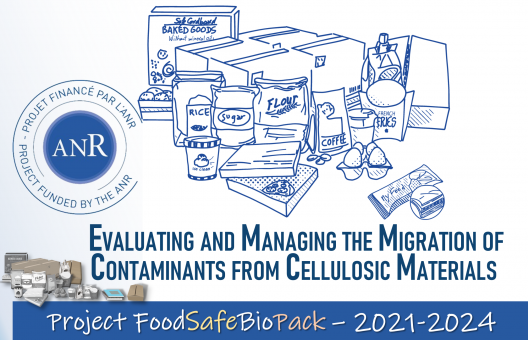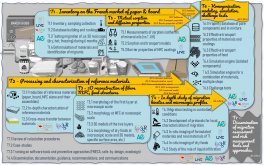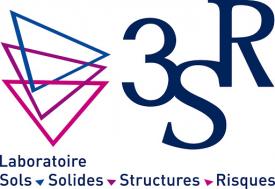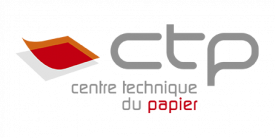Projet ANR-20-CE21-009
Coordinator : INRAe
Period: January 2021 - December 2024
Partner: INRAe(UMR SayFood 0872), LNE, université Grenoble Alpes (UMR 3SR 5521) and CTP
Context
Disposable materials and articles in contact with food (MCDA) are the leading source of chemical contaminants in food, a source of microplastics, a cause of marine pollution; they consume non-renewable resources and produce CO2. Faced with this fast-growing criticism, the law on the fight against waste and the circular economy (AGEC, LOI no. 2020-105 of February 10, 2020) and the "Single Use plastic" directive (SUP, directive (EU) 2019/904) have been put in place with targets to reduce plastic waste, increase recycled and biobased materials.
To meet these environmental and societal challenges, cellulosic materials, being the only biobased material that is both recyclable and degradable on an industrial scale, offer an economically and technologically viable solution. However, the ubiquitous contamination of dry foods by mineral oils from recycled paper and cardboard has alerted both the public and the authorities. The prevalence of an aromatic fraction in mineral oils classified as carcinogenic by the IARC (group 1) is a major food safety concern. The situation is becoming very critical because i) the presence of interfering compounds and their uneven distribution in foods make current detection and quantification limits for aromatic compounds unsuitable for risk assessment, ii) there are no harmonized standards or regulations in the EU and iii) the current crisis follows recurrent contamination by printing inks, halogenated compounds and endocrine disruptors
.Objectives
The CTP and the 3SR laboratory have developed an innovative cellulose microfiber (MFC) deposition technique called "wet lamination" to replace aluminum barriers or metallized coatings. MFC-coated materials are fully recyclable and offer excellent barriers against grease, oxygen and contaminants, enabling safe packaging for fatty and oxidation-sensitive foods. The same solution can limit contamination by printing inks, lacquers, solvents, adhesives and oligomers from plastic overwrapping. In addition, MFCs offer an alternative to fluorinated papers, which could be banned in the near future.
The FoodSafeBioPack project is designed to achieve two main objectives:
- obtain a multiscale description of the cross-matter transfer problem .
- propose corrective action on MFCs proposed as a universal functional barrier for primary and secondary packaging.
Approach
The project is divided into seven complementary tasks (T1..T7) as summarized in the figure below.
Matter transfer of organic compounds in fibrous materials and food is associated with a wide range of time scales. The project will address the problem with five complementary approaches: i) measurements of the increase in contamination during storage of priority commercial products (real food storage conditions) in T1, ii) independent study of cross-contamination between materials (real material storage conditions) in T2, iii) design of new migration cell (controlled contact conditions, temperature and relative humidity) in T4, iv) study of matter transfer with imposed chemical potentials in T5, v) extension and validation by comparison with advanced simulation in T6. The results are disseminated in T7 to stakeholders (recyclers, papermakers, food industry, authorities, technical laboratories, etc.).
Expected results
The FoodSafeBioPack project will provide new tools and methodologies for assessing chemical risks in complex situations involving cellulosic materials as a source (recycled, printed materials) or as a barrier (MFC functional barrier). The whole approach will enable preventive approaches to be developed at supply chain or packaging design level.
The project will specifically address cross-contamination issues between primary and secondary packaging at all stages of the food supply chain and anticipate migration into complex, multi-material food packaging systems with the possible presence of substances not assessed due to cross-contamination, post-use contamination or non-food grade materials introduced during recycling.
Most of the results (properties, macro / micro models) will be integrated into the preventive approach to material transfer, called FMECAengine, initially developed by INRAe for plastics and already used by industry, technical laboratories and authorities. The proposed research and tools will provide a basis for assessing consumer exposure to a wide range of contaminants throughout the food supply chain: mineral oils, photoinitiators, solvents, plasticizers and fluorinated compounds.
The main results will be published as open-source projects (simulation engines for 3D microscopic systems, 1D and chained macroscopic systems) and open-data (thermodynamic and efficient transport properties, digitized structures) to stimulate innovation in the field and accelerate the adoption of modeling standards by industry and authorities. Case studies will be used to identify the critical steps, components, designs and practices responsible for the highest risks.
The project will provide scientific evidence and preventive methodologies to be integrated into future good manufacturing practices, quality and food safety management procedures, as required by Regulation (EC) 2023/2006.
Impacts and benefits
The FoodSafeBioPack project will promote safe design approaches for fibrous materials, the development of which has been identified as a top priority. It will support the SUP 2019/904 directive on reducing the impact of plastics by promoting cellulosic materials. The revision of industrial practices in Europe could potentially affect the 48 million tons of paper and cardboard used for packaging and produced with 73% recycled fiber. Reducing the risk of chemical transfer without affecting biodegradability will bring benefits far beyond food contact applications, including medical, hygienic, cosmetic and textile products. The project will also validate and provide justification for the use of paper and board with and without MFC for various food products (snack foods, cheese, frozen foods, etc.). Cross-contamination issues encountered throughout the supply chain will also be addressed.
The scientific evidence and open source tools resulting from the project will help to organize good manufacturing practices, assess risks and prepare for future regulations.
Communications
7th edition of the ILSI conference
Oral presentation
Schelcher, M.; Locre, C.; Fraix, D.; Nguyen, P.-M.; Lyathaud, C. FOODSAFEBIOPACK Project - Migration from cellulosic materials: contaminants mapping and innovative sustainable barrier solution. 7th International Packaging Materials Symposium (ILSI), May 3-6. Digital event, 2022.
Poster
Biant, L.; Hayert, M.; Nguyen, P.-M.; Vitrac, O. In-situ imaging of chemical contaminants in recycled paper and board. 7th International Packaging Materials Symposium (ILSI), May 3-6. Digital event, 2022.
.
18e congress of the Société Française de Génie des Procédés (SFGP 2022)
Keynote
Biant, L.; Hayert, M.; Nguyen, P.-M.; Ayoub, H.; Vitrac, O. CHEMICAL IMAGING: Identification of the causality of food contamination by recycled materials packaging. SFGP, November 7-10. Toulouse, France, 2022.
Poster
Nguyen, P.-.M.; Kermorvant, J.; Lyathaud, C.; Domenek, S.; Vitrac, O. New strategies for the evaluation and management of recycled food contact materials. SFGP, November 7-10. Toulouse, France, 2022.





